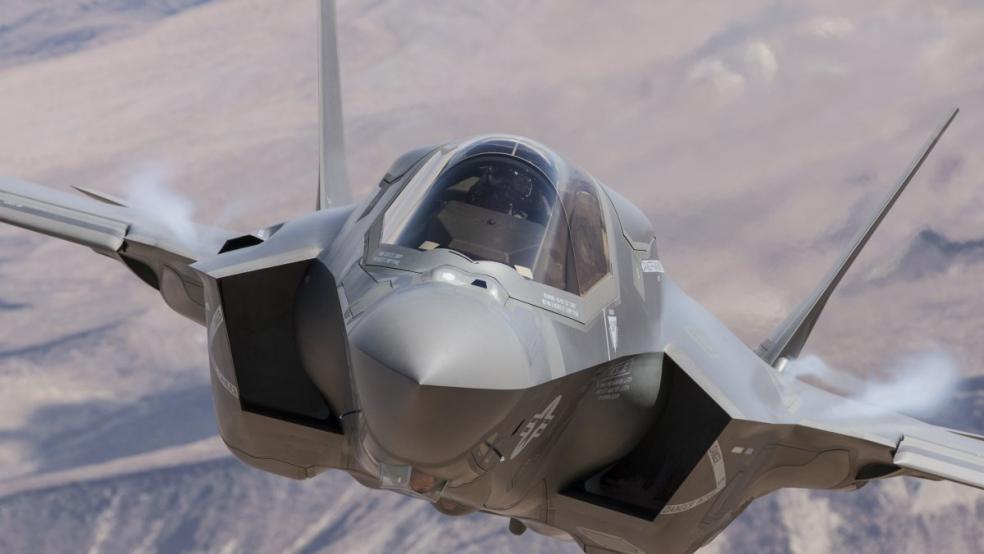The F-35 Joint Strike Fighter is a big winner in the newly-minted $1.1 trillion government spending bill.
The Obama administration requested about $11 billion in fiscal 2016 to buy 57 planes, up from the 44 manufacturer Lockheed Martin is building this year.
Related: Yet Another Costly F-35 Glitch That Won’t Be Fixed Any Time Soon
The sweeping funding bill, which could pass both chambers of Congress as soon as Friday, includes an additional $1.3 billion so the Pentagon can buy an additional 11 fighters, for a total of 68 in 2016.
That’s quite a vote of confidence for a program that has cost taxpayers around $400 billion to date, making it the most expensive weapon in U.S. history.
The program’s latest glitch was uncovered earlier this year when the Pentagon learned the fifth-generation airplane’s ejection seat could cause fatal whiplash for pilots weighing under 136 pounds, even though the seat was supposed to handle pilots weighing between 103 and 245 pounds.
Related: Why the UK Is Going All In with the F-35 Joint Strike Fighter
The infusion of cash is the latest proof that the F-35 has become a program that’s simply too big to fail in the eyes of Capitol Hill lawmakers, who basically shrug whenever the effort hits a snag, as they did last year when an aircraft’s engine caught fire and grounded much of the military’s nascent JSF fleet.
Each of the military services stand to benefit from the lawmakers’ largesse. The omnibus provide the U.S. Marine Corps $780 billion to buy six new aircraft, $225 million for the Navy to purchase two and $294 million for the Air Force to get three more of its F-35 variant.
The extra money is a drop in the bucket compared to the nearly $573 billion in overall defense spending included in the massive appropriations bill, just $6 billion shy of President Obama’s original budget request.
Related: Here’s Why 'President Trump' Might Dump the F-35
The legislation features around $514 billion in base funding for the Pentagon and almost $59 billion for Overseas Contingency Operations (OCO), commonly known as the war fund.





